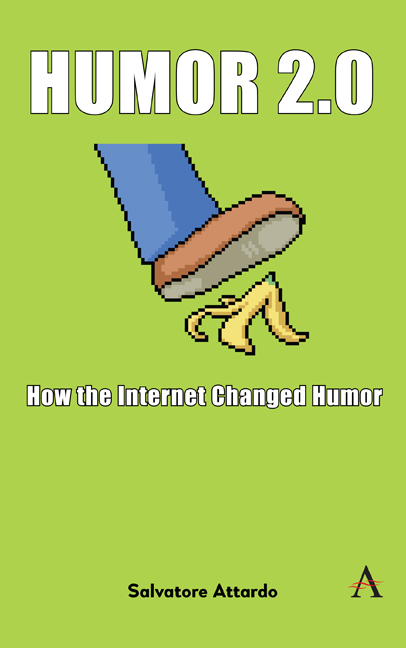18 - Photobombing as Figure Ground Reversal
Published online by Cambridge University Press: 28 February 2024
Summary
Photobombing derives its humorous nature from the incongruity of a forced reversal of the roles of the figure and selected aspects of ground in the image. The term “photobombing” seems to have been coined in 2009 (Wikipedia). It does not appear prior to 2008 in Google Ngram. Zimmer & Carson (2011, p. 473) narrow it down to a post on May 22, 2008. Most definitions of photobombing assume the intentionality of the act of photobombing: Know Your Meme defines photobomb as a practical joke. The top definition of photobomb in Urban Dictionary reads, in part, “Intentionally posing in other people's photos.” As we will see that is not entirely correct; to be fair another definition on Urban Dictionary hits the nail on the head: “Any time the background of a picture hijacks the original focus.”
Know Your Meme lists a large number of websites dedicated to photobombing and lists several particularly viral photobombs. Let us examine some examples, choosing among the viral cases. When the image of two copulating dogs appears in the background of a beachside picture of two friends, what should be an otherwise unremarkable detail of the background is brought to the foreground and the script opposition between the scene in the foreground (contextualized as such by the literal framing of the image) and the scene in the background. Consider that if the two dogs had been merely walking by, this would not be a photobomb. So, what should have been an unremarkable element of the ground becomes a figure, but a parasitic one: it is not the intended figure, which the photographer had chosen, framed the image around, etc.
The photobomb may be intentional or unintentional (see the contrasting definitions in Zimmer & Carson, 2011). In the former case, the gaze of the photobomber has to be directed at the camera. If the gaze of the photobomber is not directed at the camera, we have no particular reason to assume that the photobomb is intentional. A potential exception to this may be movie star Bill Murray, who is well-known as a photobombing aficionado. Notice that photobombs by animals fall within the same category. Animals have intentionality, just like humans. They may not know that the camera is taking their picture, but they know that the camera is an object and that they are gazing at it.
- Type
- Chapter
- Information
- Humor 2.0How the Internet Changed Humor, pp. 183 - 188Publisher: Anthem PressPrint publication year: 2023

